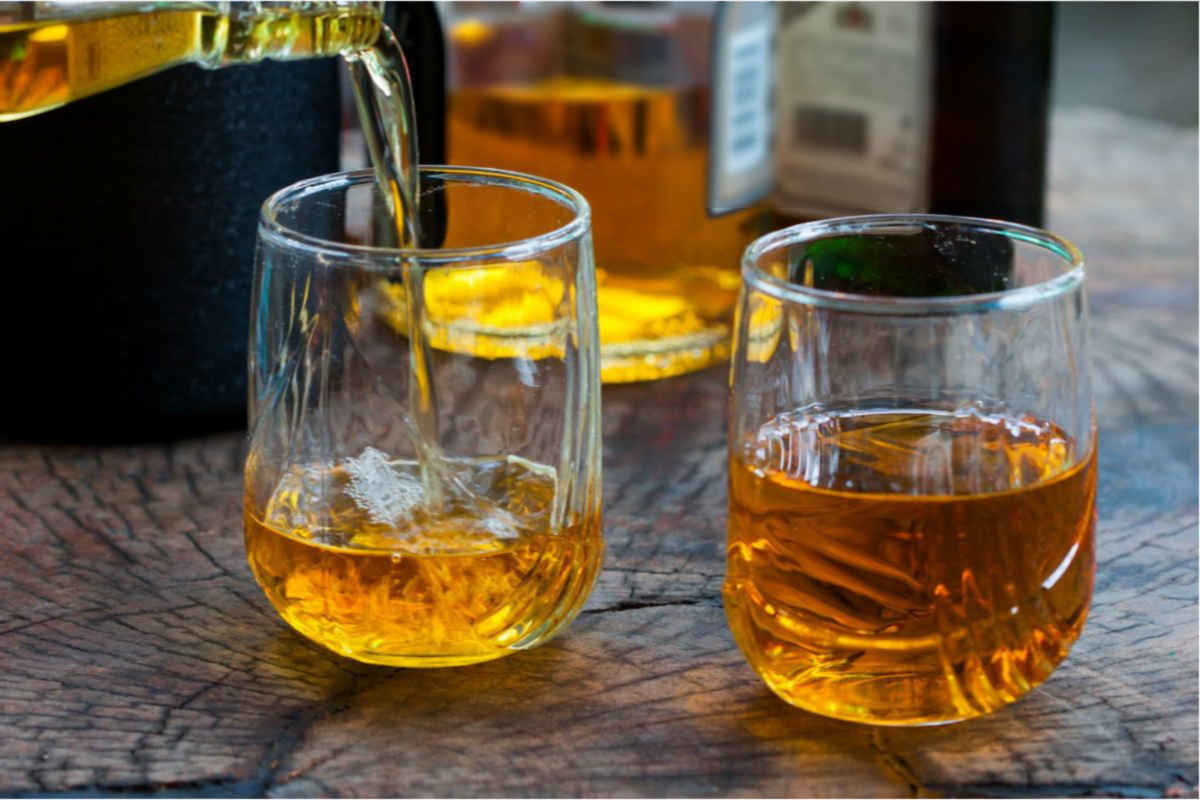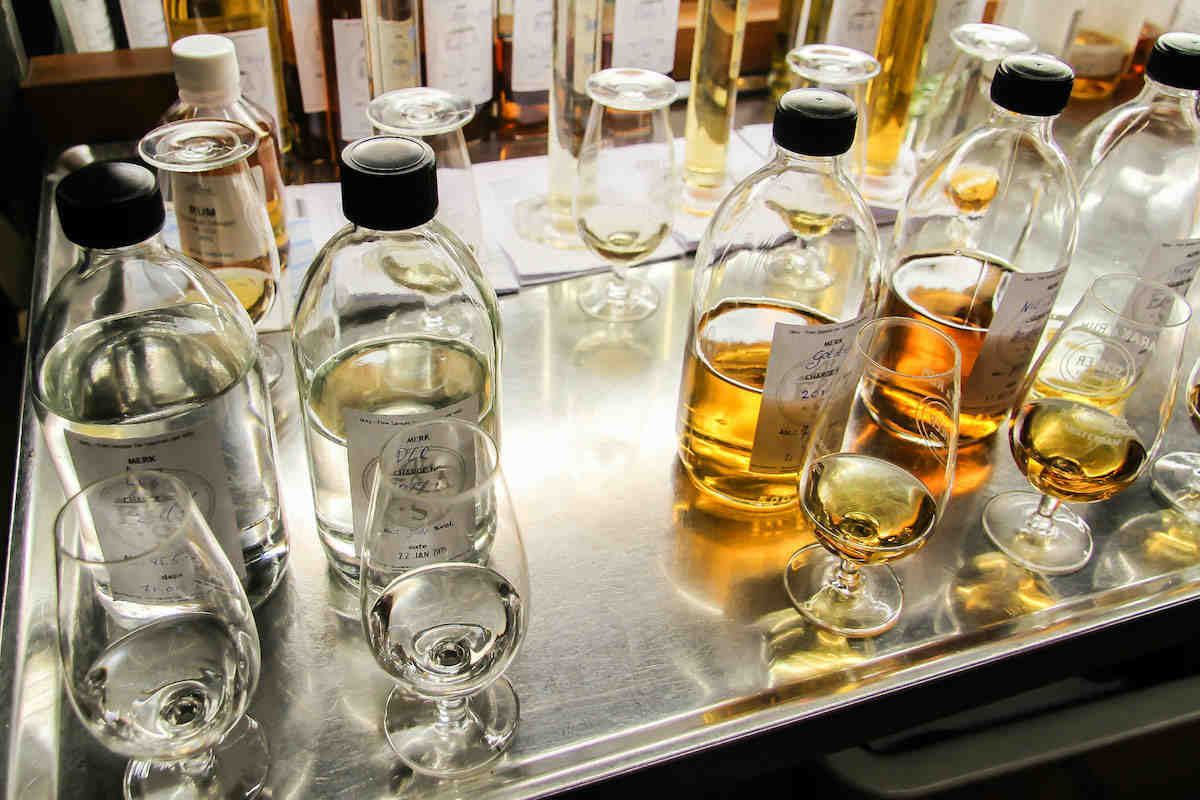As the premium rum category gains steam and consumers look beyond Bacardi and Captain Morgan, it’s natural that vintage expressions like Appleton 12 Year and Plantation Barbados 5 Year are receiving more attention. (Both were highlighted in my November 2017 column, which featured the best rums under $30 for the aspiring rum enthusiast.) These vintage expressions are a great way to experience and understand a rum producer’s unique house style.
However, vintage expressions weren’t always the norm in the spirits world. Prior to the 1960s, nearly all scotch whiskies were blends sourced from multiple distilleries—think Johnnie Walker, Dewar’s, and Ballantine’s. These brands built their name on their expert blending skills—selecting whisky from multiple distilleries and creating a coherent melody of flavors that remains consistent, year after year.
Cognac tells a similar story. The big houses like Courvoisier buy stock from multiple distilleries and blend them to create a unique house flavor profile. Similar to blended scotch, the perceived value is more about the blenders and a consistent house style across many years—and less about the distilleries/producers.
While expertly blending spirits across many distilleries and ages is a challenge, no other spirit category comes close to the breadth of the blending palette that master rum blenders utilize. To be clear, I’m talking about blenders who work with rums from many countries, not blenders who only blend rums for a particular single distillery. In working with rums from multiple countries, blenders pull together distillate made with different source material (molasses vs. cane juice), fermentation techniques, and distillation processes (batch vs. continuous).
Taste an unaged, grassy rhum agricole next to a Jamaican funk bomb—the differences are striking. Now compare them to a refined pot/column blend from Barbados. For rum blenders, it’s common to deftly determine the right ratios of rums from Jamaica, Guyana, Martinique, Barbados, Trinidad, and numerous other rum producing countries. The undisputed masters of this tradition are Amsterdam’s E&A Scheer, which I’ve written about here and here.
The earliest and best known example of multi-country, blended rum is the famed British Navy rum. On the London docks of yore, master blenders pulled together rums arriving from British colonies in the Caribbean to create a custom house flavor profile. This was the rum sent out to sea on navy vessels for the sailors’ daily rations. The modern day heirs of this naval rum legacy include Pusser’s or, if $1000 is in your budget, the Black Tot.
More recently, the early Tiki bartenders like Don Beach and Trader Vic used multiple different styles of rum to create the complex, layered symphony of flavors that are the base of Tiki cocktails. The key takeaway here is that while a rum may be great on its own, sometimes blending wildly different styles creates a whole greater than the sum of its parts.
While you might not have a vast rum library to experiment with your own blends, a number of great blended rums encompassing many rum styles are readily available on store shelves. Here’s a short list of multi-country blended rums worth looking at.
5 Great Blended Rums

Banks Rum 7 Golden Age ($30/750 ml)
A composite of 23 rums from seven countries (Jamaica, Guyana, Trinidad, Guatemala, Panama, Barbados, and Java). Although Banks was purchased by rum giant Bacardi in 2015, it’s still reported to be blended in Amsterdam by E&A Scheer. In addition to Golden Age, Banks also has a similarly priced “Five Island” white blend composed of 21 rums from five countries.
Denizen Merchant’s Reserve ($28/750 ml)
A blend of rum from four Jamaican rum distilleries, plus funky “grand arome” rhum from Martinique, Denizen Merchant’s Reserve is blended in Amsterdam by E&A Scheer. It was created in consultation with rum expert Martin Cate to be the perfect, single-bottle rum for making a classic 1944 Mai Tai. While targeted at cocktails, this rum is also quite enjoyable consumed neat.
Plantation O.F.T.D. Overproof ($30/L)
Plantation O.F.T.D. was developed with an all-star cast of Tiki and rum experts—including, once again, Martin Cate—to be the ideal overproof rum for Tiki and tropical concoctions. A powerhouse of a rum at 138 proof, it brings together countries that are staples of the British Navy rum style: Barbados, Jamaica, and Guyana. Fun fact: within the blend is a Jamaican rum with the highest ester levels (i.e. “funk”) allowed by Jamaican law.
Plantation 3 Stars ($17/L)
Another entry from Plantation Rum (they often emphasize their blending expertise), the 3 Stars is world’s away from the flavorless white rums you may be accustomed to. A blend of rums from Jamaica, Trinidad, and Barbados, some of the rums are aged before final filtration to make the resulting rum clear. The 3 Stars works particularly well with daiquiri-style drinks.
Dos Maderas 5+3 ($27/750 ml)
This blend of Guyanese and Barbados rums is aged for five years in the tropics, and then shipped to southwest Spain’s sherry region, where it solera ages for another three years in Palo Cortado sherry casks. If you like your rums on the sweeter side, there’s also a Dos Maderas 5+5, which is Dos Maderas 5+3, but aged for two more years in ultra-sweet PX sherry casks.



